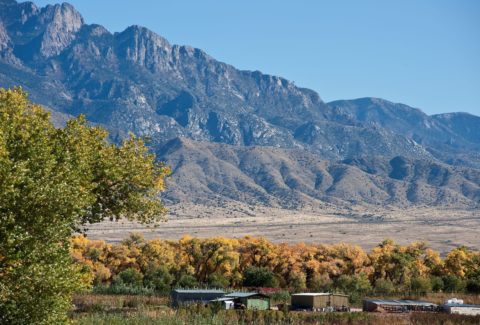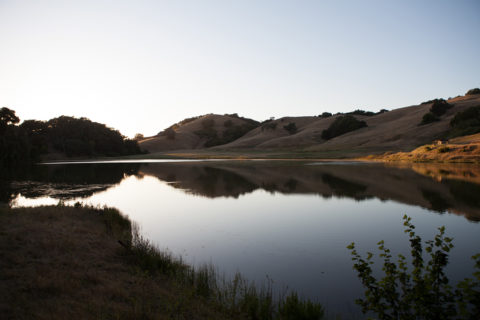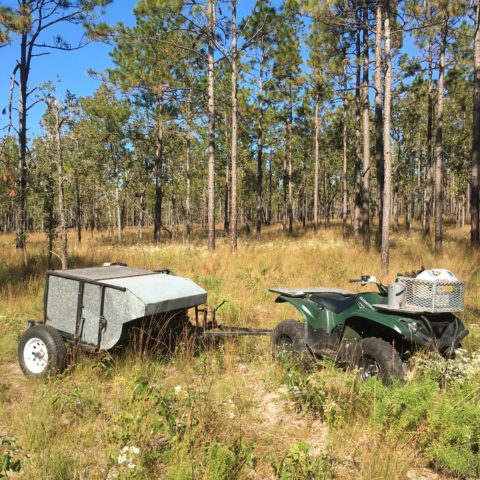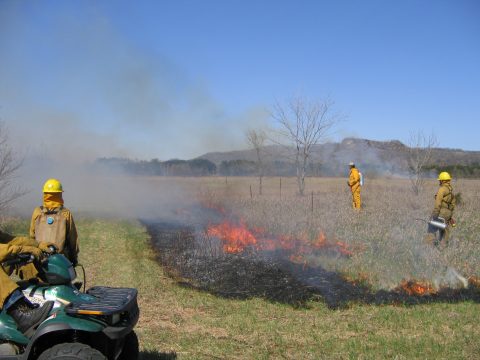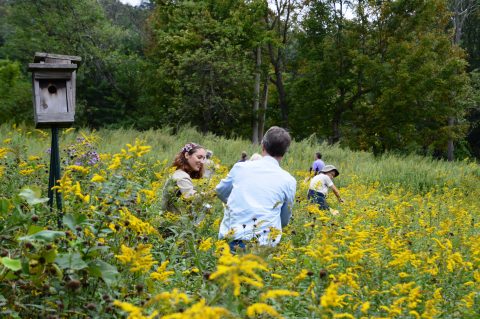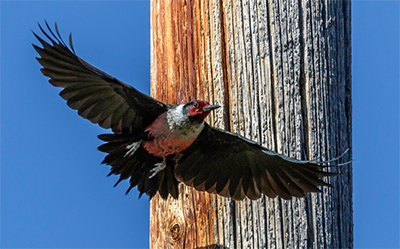2023 Small Grant Awardees
We are pleased to announce the Cornell Land Trust Grant awardees for 2023. With support from our generous sponsors the program was able to award $230,000 to 14 land trusts throughout the country to assist awardees with management and restoration of private protected lands, integrate bird conservation and tools into prioritization and planning, and develop partnerships within the birding community to amplify conservation efforts. The next request for proposals will open in January 2024.
Blue Mountain Land Trust (Oregon), $25,000
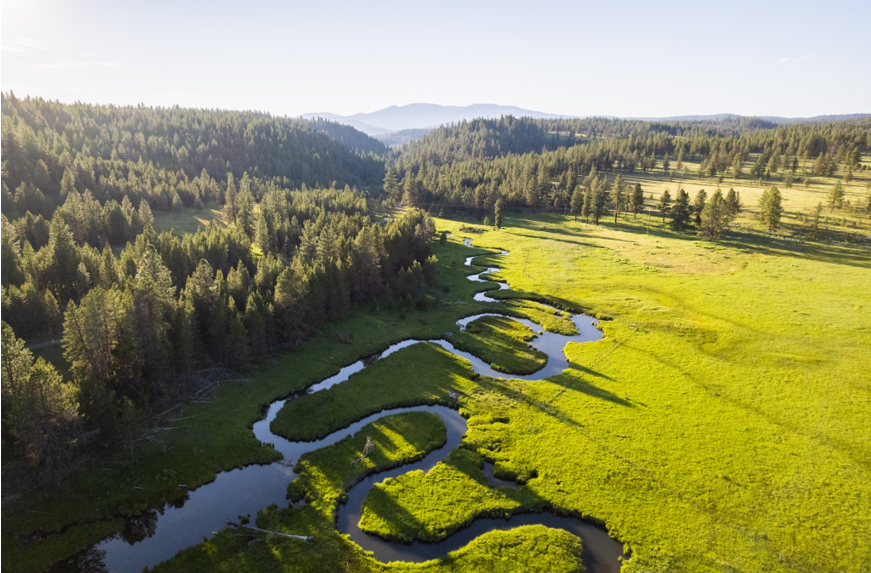
Blue Mountain Land Trust (BMLT) will engage in restoration work across habitat types at Phipps Meadow, a 278-acre property surrounded by the Malheur National Forest that contains a diverse range of habitat types such as coniferous forest, sagebrush steppe, meadow, emergent marsh, and the headwaters of one of the longest undamned rivers in the contiguous U.S, the Middle Fork of the John Day River. BMLT will bring in collaborative partners from the Confederated Tribes of the Warm Springs, the North Fork John Day Watershed Council, the Malheur National Forest, and other members of the John Day Basin Partnership. With the support from the Cornell Lab’s Land Trust Small Grant Program, BMLT will develop and then implement activities from a forest management plan to enhance forest health, resilience, and habitat at Phipps Meadow. This will include activities such as thinning overstocked forests, creating tree snags, improving woodland clearings and opening forest floors, and managing invasive grass encroachment. These restoration efforts will complement ongoing regional initiatives for river, meadow, and forest restoration in surrounding federal, state, and tribally-owned land. The positive ecological impacts will extend beyond property boundaries and benefit numerous habitat types.
BMLT will hire contractors as well as work hand in hand with their volunteer trail stewardship group, known as the BMLT Blues Crew. Together, they will organize opportunities for the public to participate in forest thinning and brush clearing work, ensuring everyone has a chance to contribute to this restoration work. In addition, BMLT recognizes the importance of monitoring the impact of restoration actions on bird populations. To achieve this goal, they will extend invitations to the Grant County Bird Club and other community members to conduct point count surveys both pre and post management, enabling a thorough assessment of how the restoration efforts affect bird populations at Phipps Meadow. Learn more about Phipps Meadow here.
Grand Traverse Regional Land Conservancy (Michigan), $25,000
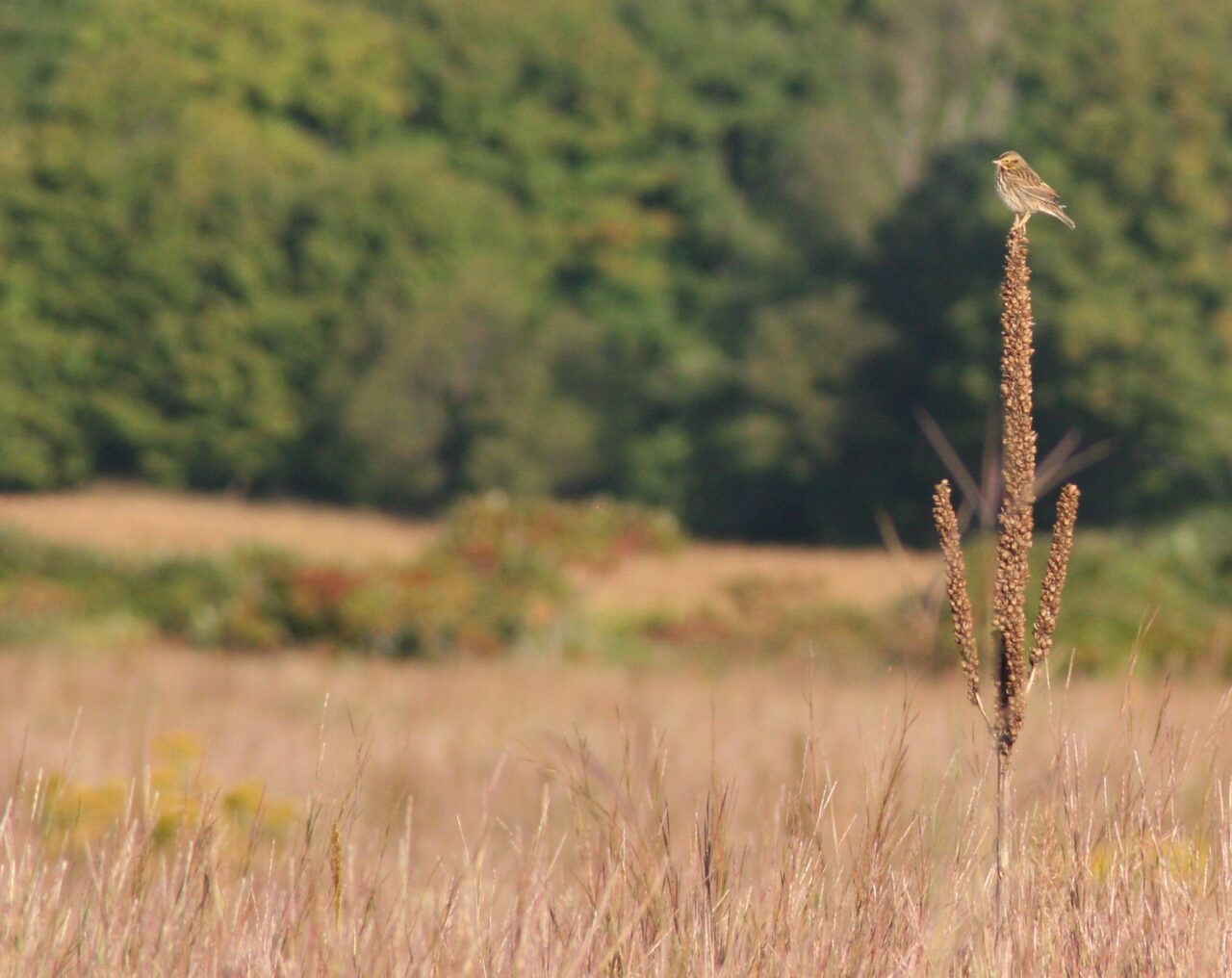
Grand Traverse Regional Land Conservancy (GTRLC) will utilize funds from the Cornell Lab’s small grant program to improve the quality of nesting grassland bird habitat by managing invasive species at Arcadia Dunes: the C.S Mott Nature Preserve. When GTRLC protected the nearly 4000-acres of Arcadia Dunes in 2003, it included many acres of a fallow farm field that provided little ecological value. With the support of volunteers and numerous state, local, and federal partners, GTRLC converted 300 acres of fallow field to a more botanically diverse grassland habitat. With the Cornell Lab’s small grant funding, GTRLC will conduct grassland bird surveys before hand-pulling pulling invasive weeds. Throughout the grant period, GTRLC will conduct nesting bird surveys to gather data about grassland birds at Arcadia Dunes. By the end of the grant period, GTRLC will have removed invasive spotted knapweed from 120-acres on property, as well as numerous invasive shrubs and trees from 60-acres of grassland habitat. Only 1% of Michigan’s native grasslands remain and this important habitat continues to be lost nationwide as development pressure and threats from invasive plants increase. As a result, grassland and migratory birds that depend on this open habitat for nesting have suffered steep population declines. “With the support of The Cornell Land Trust Bird Conservation Initiative we’ll turn the tide of woody invasive species invading the grassland and better protect the continuum of native grassland habitat throughout Arcadia Dunes,” said Chris Garrock, GTRLC’s Director of Stewardship. The project not only addresses long-term habitat management goals at Arcadia Dunes but provides an opportunity to strengthen engagement with local Audubon groups that conduct birding tours and events on GTRLC properties throughout the year. Staff and volunteers will monitor wildlife response to restoration activities by conducting point counts at 23 sites throughout the project area. GTRLC will host hikes and produce additional outreach material to increase and raise awareness of threatened bird species and our habitat restoration efforts. Restoration can vastly improve the quality of habitat available for grassland bird species, including those of special concern and state endangered species like the Grasshopper Sparrow, Henslow’s Sparrow, and Dickcissel.
Green Spaces Alliance of South Texas (Texas), $25,000
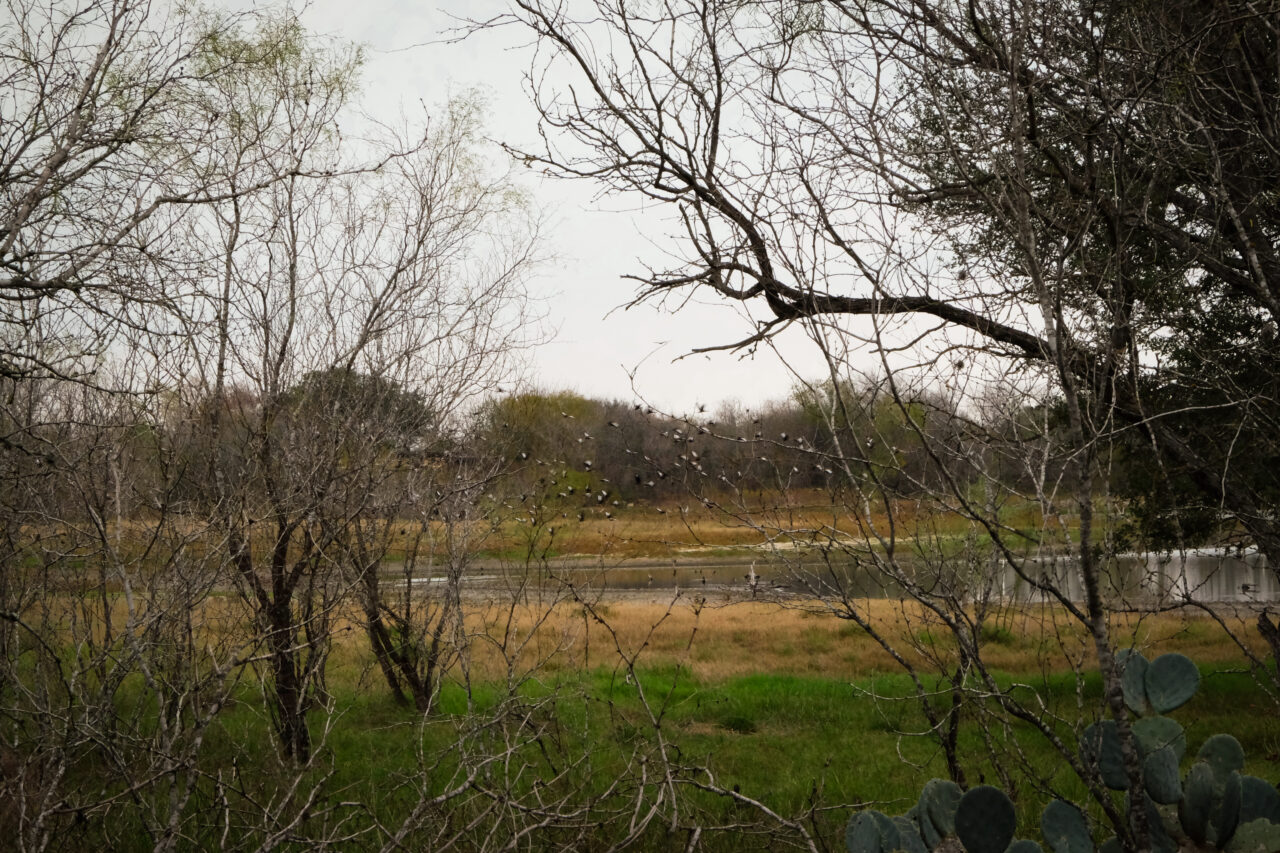
Green Spaces Alliance of South Texas (GSA) is partnering with the Bexar Audubon Society (BAS) to restore 55 of the 247 acres of The Haggard Ranch conservation easement to a native Texas Blackland Prairie ecosystem. The Haggard Ranch Prairie Restoration Project will complement Bexar Audubon, The City of San Antonio Parks Departments, and the Alamo Master Naturalists’ efforts to restore native prairies on the southwest side of San Antonio. The selected acreage is nestled between two ponds, one of which is artesian-fed and a year round water source for migrating birds on the central flyway corridor. The land clearing will remove invasive species, including Chinese tallow and chinaberry, enhance the water sources and wildlife habitat for grassland bird species, and reintroduce a rare plant community native to South Texas. While undergoing this restoration, Green Spaces Alliance will conduct workshops and field days to engage landowners, student groups, volunteers, and the broader local community about the benefits of native ecosystems for water conservation and wildlife habitat. Using established birding protocols, Bexar Audubon Society will conduct seasonal bird surveys of the property to identify transitioning species types as the habitat changes. These surveys will also support Bexar Audubon Society’s larger regional goal to identify bird populations on private lands by using eBird. Over 95% of land in Texas is privately owned, thus the opportunity to contribute to bird abundance and trend data via the vast eBird database will deliver valuable information on regional bird populations and the impacts of restoration efforts on private lands. Returning the Haggard Ranch to Texas Blackland Prairie will create habitat for Texas Parks and Wildlife Department species of greatest conservation need, provide years of bird population monitoring in the central flyway, and increase the amount of acreage restored along the IH-35 corridor, one of the most rapidly growing areas in the United States. With the high concentration of historically underserved groups residing in South Texas, land conservation and restoration projects are vital for the health and well-being of the entire community and support underserved and under-resourced landowners in keeping and improving their farms and ranches in a place of rapid development.
Jefferson Land Trust (Washington), $25,000
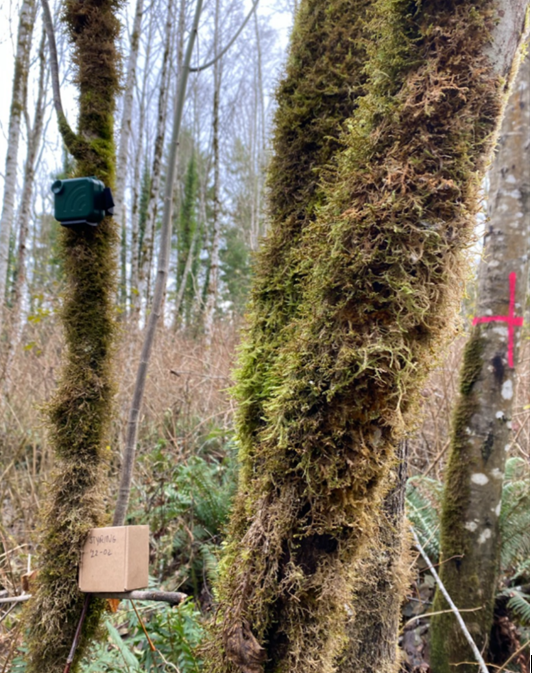
Jefferson Land Trust (JLT) and neighboring Great Peninsula Conservancy (GPC) will partner together for Listen Up, a program to improve the long-term survival of Western Washington forest birds by implementing state of the art habitat improvement practices across 30 preserves, initiating acoustic monitoring of bird responses to these conservation practices with AudioMoth devices on nine preserves, and publicly sharing their findings and replicable protocols through outreach and communications.
The long-term conservation goal of JLT and GPC is to increase forest biodiversity and mitigate wildlife decline, particularly among bird populations, in two neighboring counties along Washington State’s Olympic Peninsula. The Listen Up partnership will expand habitat management practices and bird monitoring across a regional area of permanently protected lowland forests and streams. This includes enhancing 1,016 acres of various ecosystems by improving forest structure and diversity and increasing habitat availability for a wide range of bird species through practices such the creation of snags, den trees, and coarse woody debris, the generation of patch openings and selective thinning, and the removal of competing non-native vegetation to maintain native understory species. Additionally, the project aims to implement a monitoring protocol on select properties and engage the public through outreach and communication efforts, sharing lessons learned with fellow land trusts and project partners. “This partnership has the potential to really amplify our work – staff will be able to engage in training and sharing lessons learned across a larger regional area, which will ultimately increase both the effectiveness and efficiency of our land management activities,” says Carrie Clendaniel, Jefferson Land Trust Preserve Manager. The Listen Up project will support birds and other species on land trust lands, benefiting 58 bird species, including seven Species of Greatest Conservation Need, 13 Species of Continental Concern, and four Common Birds in Steep Decline, within two Ecological Systems of Concern: North Pacific Hardwood Conifer Swamp and north Pacific lowland riparian forest.
Kent Land Trust (Connecticut), $25,000
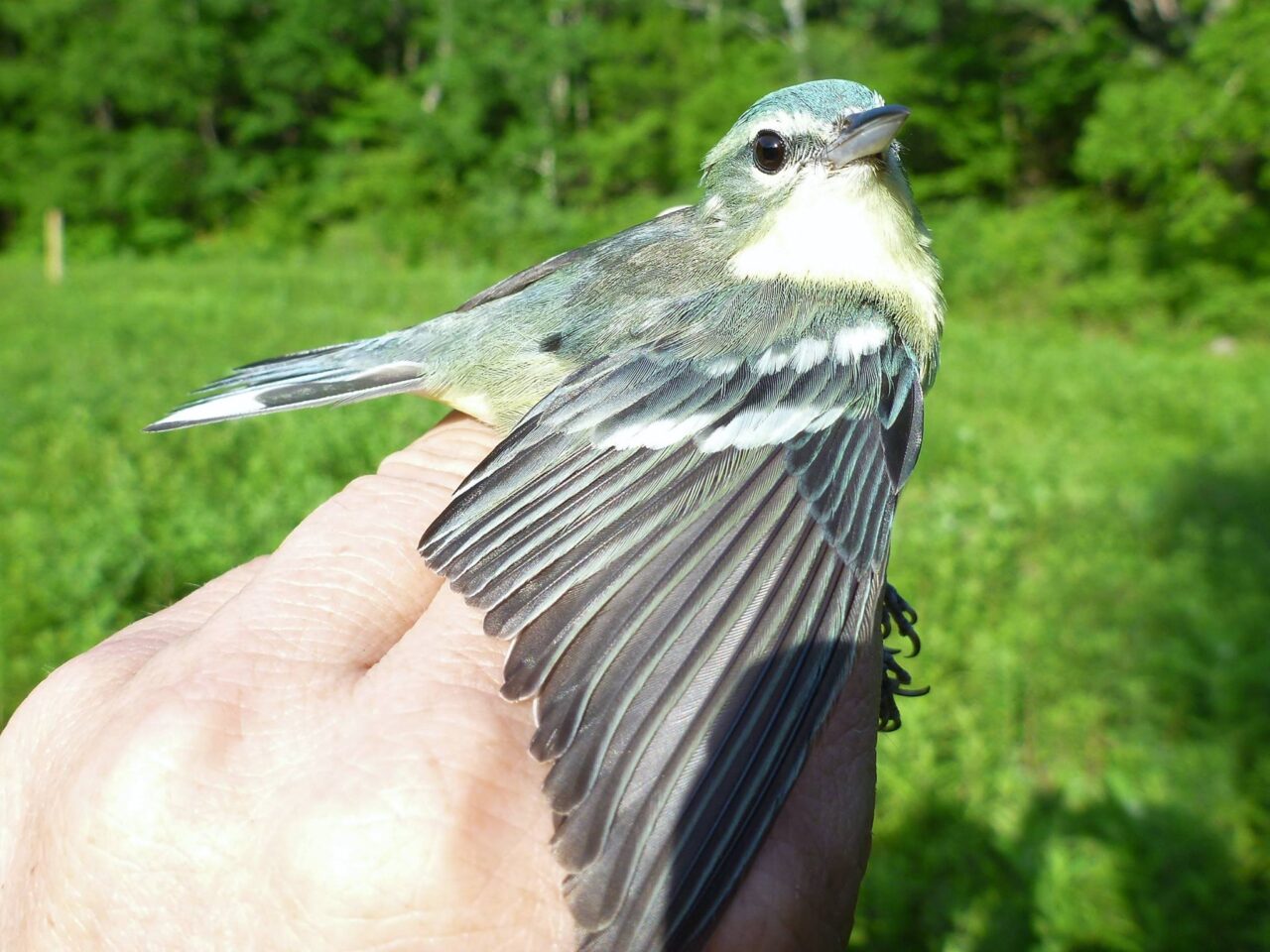
The Kent Land Trust (KLT) continues to invest in environmental stewardship supporting biodiversity and species resilience by centering land management, programming, and messaging around improving bird habitat. KLT will build on its successful 2022 partnership and capacity small grant project, completed with the support from the Cornell Lab’s land trust initiative, by strengthening land management capacity within the 22,580-acre Macedonia Forest Block Important Bird Area (MFBIBA) in Kent and Sharon, Connecticut. The project convenes conservation partners that hold land and easements within the MFBIBA to implement the recommendations of the area’s 2019 Conservation Plan. Two habitat restoration projects conducted at the Sharon Audubon Center will bring together landowners, local contractors, and experts in bird habitat management to demonstrate best practices, create models for replication, learn about federal and other funding resources, and line up additional restoration projects throughout the MFBIBA. Two eBird training and fieldwork events will be offered, then partners will use the Northeast Bird Habitat Conservation Initiative Mapping Tool and community science-driven field data collection through eBird and Merlin Bird ID to inform their projects and engage additional private landowners and community stakeholders. “This project is specifically designed to promote land management, protection, and outreach goals for the Macedonia Forest Block Important Bird Area, as set forth in the 2019 comprehensive Management Plan”, said Connie Manes, KLT’s Executive Director, “our forward-looking strategy will enable partners to capitalize on soon-to-be-available funding streams, greatly leveraging the impact of The Cornell Lab’s Land Trust Bird Conservation Initiative’s investment. We are grateful to The Cornell Lab for their continued support, which will exponentially increase coordinated, excellent stewardship across a large area important for bird conservation and climate resilience by building landowner and contractor capacity and engagement in Northwest Connecticut.”
Mount Grace Land Conservation Trust (Massachusetts), $25,000
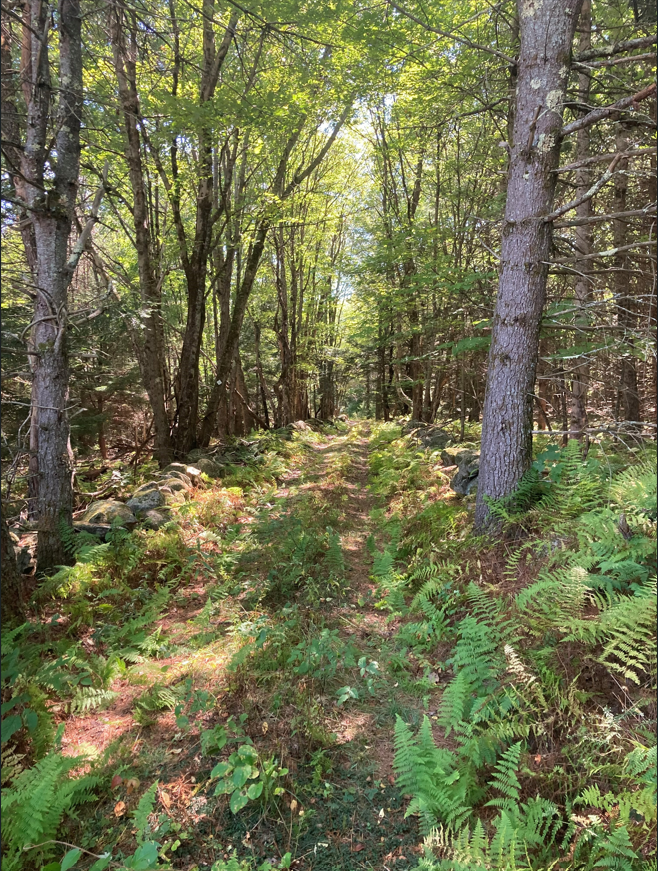
Mount Grace Land Conservation Trust’s (MGLCT) Guiney Memorial Forest is a 33-acre wildlife sanctuary in Royalston, Massachusetts. This small sanctuary has various habitat types, including maturing white pine, hemlock, and hardwood forest as well as a diverse understory, spruce-fir tamarack forested swamp, and more. Using funds from Cornell Lab’s Small Grant, MGLCT will restore habitat and create habitat management demonstration areas that support targeted bird populations and can be used as outreach and educational tools for land trust staff, conservation practitioners, and private landowners. Restoration work will take place in the context of concurrent work at Birch Hill funded by a USFS Landscape Scale Restoration Grant. Partners include the Ruffed Grouse Society and the Massachusetts Department of Fish & Wildlife and Department of Conservation & Recreation. Work will include outreach to birders participating in eBird surveys of the site and outreach to landowners interested in replicating site management techniques to improve bird habitat on their own land. “Small landowners play a significant role in forest stewardship in southern New England,” says Mount Grace Stewardship Manager Tessa Dowling. “This project is an opportunity to engage local landowners in bird-friendly forestry by demonstrating ecological restoration work on a scale that is relevant to private owners of small forest tracts.”
Vermont Land Trust (Vermont), $25,000
The Vermont Land Trust (VLT), in partnership with Audubon Vermont and the Friends of the Charlotte Park and Wildlife Refuge, is expanding breeding habitat and connectivity for Golden-winged Warblers (GWWA) in a regionally important park adjacent to existing GWWA habitat and conserved lands in Chittenden County, Vermont. Vermont is the northeastern-most reach of GWWA range and breeding habitat, and is home to the Western Vermont Golden-chain Collaborative (WVC), a partnership between the Cornell Lab and Vermont-based land trusts and conservation organizations to increase connectivity of preserved lands critical to the GWWA.
This grant will advance WVC’s goals by building on GWWA habitat restoration work performed with funds from a 2020 Cornell Land Trust Small Grant on an adjacent 400-acre property. This project will remove invasive species, including European buckthorn and bush honeysuckles, in successional shrubland, plant native trees and plants within the newly created habitat, and conduct pre-and-post management bird monitoring to better understand the response to management by GWWA and other shrubland obligates. “Vermont Land Trust is thrilled to support this critical bird habitat restoration in the Charlotte Park and Wildlife Refuge, which was conserved in 1998,” says Allaire Diamond, VLT’s ecologist who will oversee the project. “Our dedicated partners are combining years of research and expertise on migratory bird science with inspiring local energy, which will result in practical, visible, and repeatable results to improve GWWA habitat in the Champlain Valley.” As part of the project, VLT will also hold two workshops. The first for WVC partners, land trusts, and regional conservation entities, will explain the grant, outline the initiative’s goals, and showcase restoration in progress. The second workshop will be open to the public and held in the spring of 2024, to discuss the results of the work and its impact on the warbler habitat.
Willistown Conservation Trust (Pennsylvania), $25,000
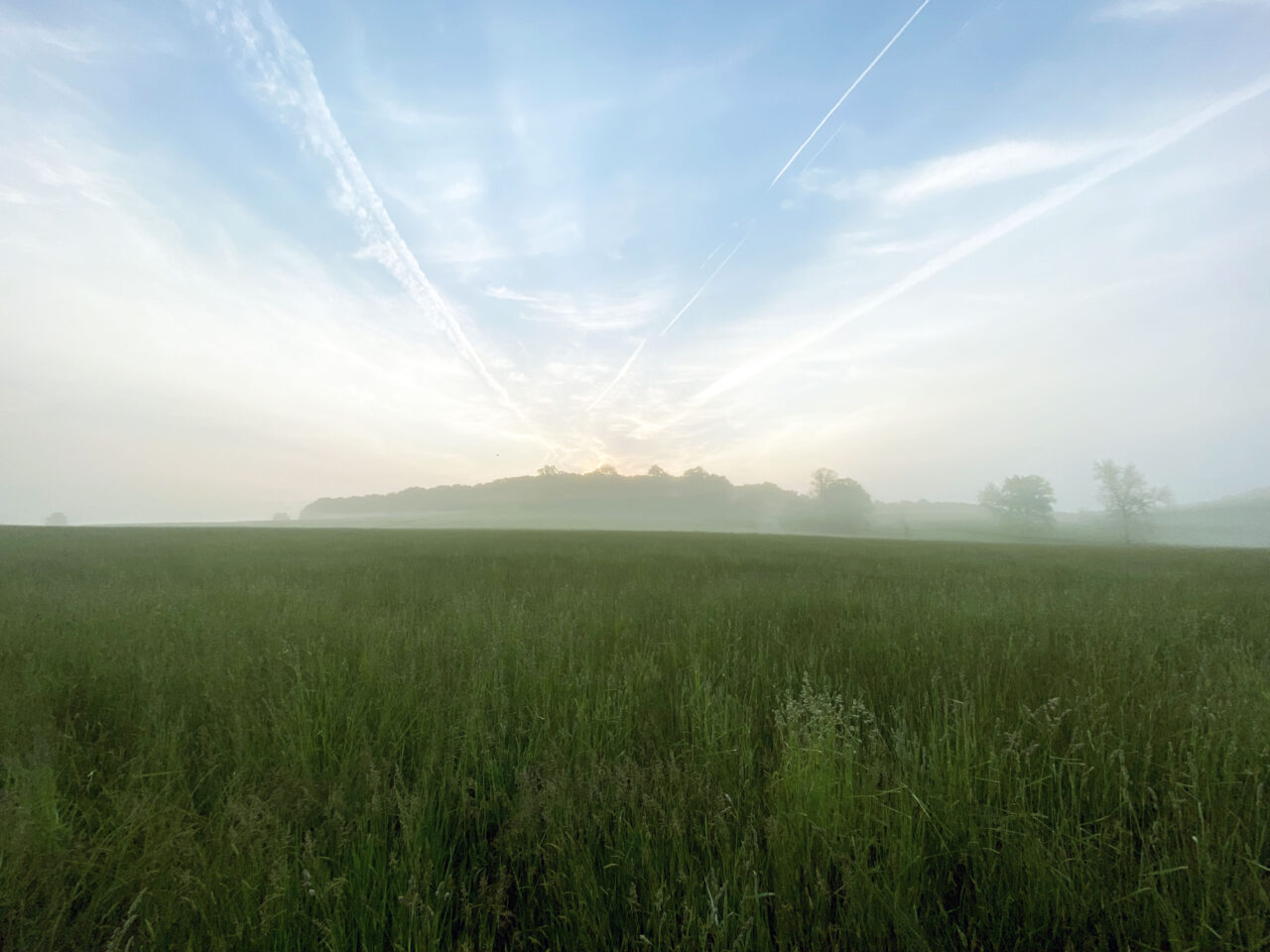
Willistown Conservation Trust (WCT) will partner with Natural Lands in the Greater Doe Run area of Chester County to help reverse the decline of grassland bird species through land management practices, research, education, and community engagement. This initiative will support the Grassland Bird Collaboration (GBC) and its goals to create a grassland bird conservation area comprised of working landscapes and existing preserves in southern Chester County, as well to facilitate conversations with landowners about declining birds and grasslands to grow a land conservation ethic within the region.
With the benefit of a local mulch hay market that prefers later-cut hay, WCT will lead the effort to enroll at least 750 acres of preserved, privately-held working lands in a delayed mowing commitment to conserve three focal grassland bird species: Bobolink, Eastern Meadowlark, and Grasshopper Sparrow. Natural Lands will use its network of publicly accessible nature preserves to manage land for grassland birds and promote these practices through demonstration areas and three educational events for enrollees and the community. The enrolled fields will be monitored during the nesting season to track breeding populations of grassland birds with data analyzed to determine productivity. The project will also include a research component using the Motus Wildlife Tracking System to gain insights into how Bobolinks use the working landscape of Chester County with outcomes shared with landowners and partners. Says Zoë Warner, project manager for the Grassland Bird Collaboration, “By meeting our conservation goals, we will increase the value of conserved land within a large contiguous preservation belt. The benefits of the land will go beyond ‘open space’ — it will provide valuable and essential breeding grounds to support local grassland bird populations.”
Arroyos & Foothills Conservancy (California), $5,000
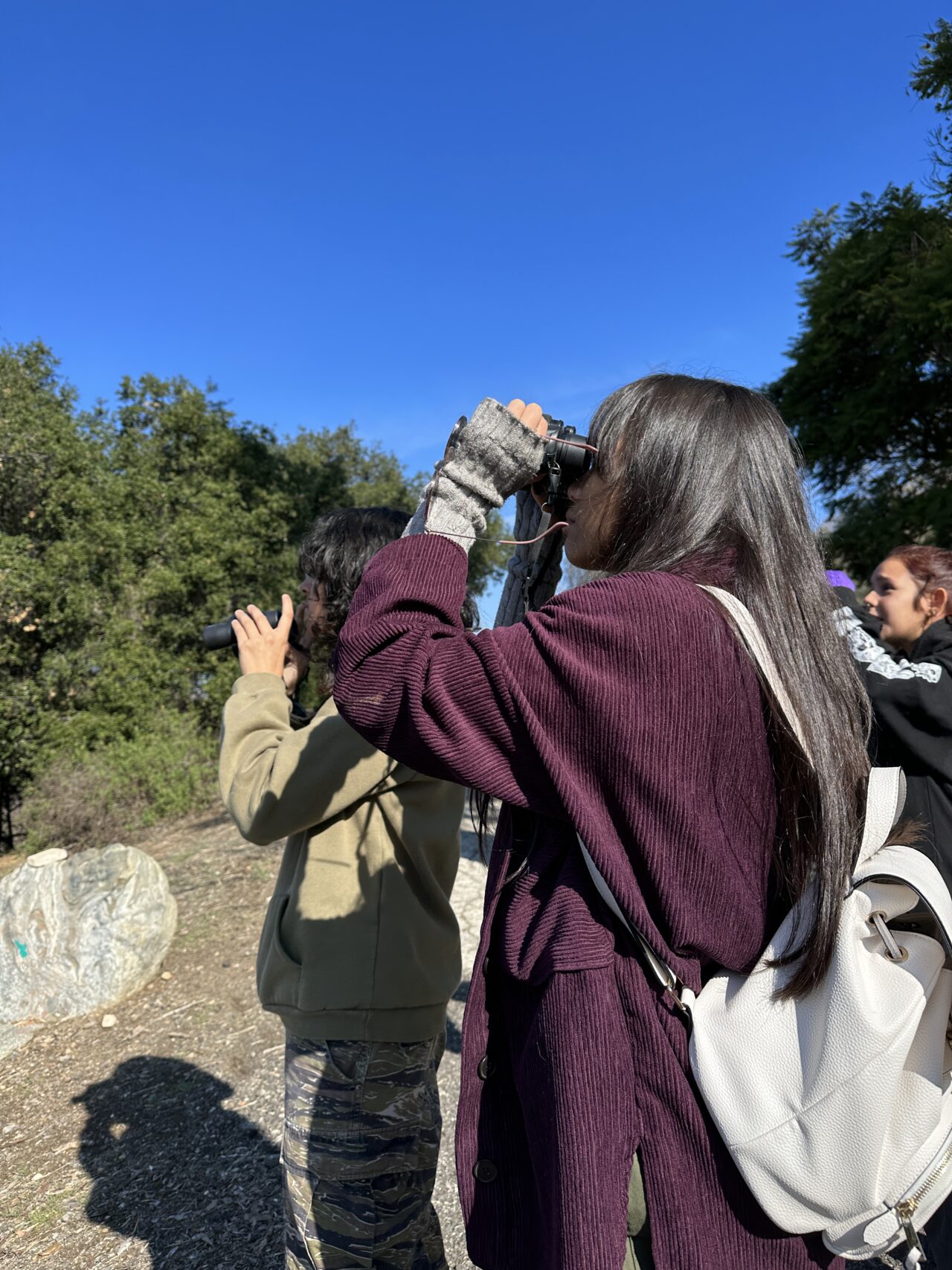
Arroyos & Foothills Conservancy (AFC) works in Northern Los Angeles County to conserve and improve connectivity for wildlife. Using funds from the Cornell Lab’s Land Trust Small Grant Program, AFC will expand their Conservation Through Education Initiative (CTEI), which supports K-12 field trips and community programs. The CTEI cultivates conservationists and land stewards who will directly benefit from and carry on the work of AFC into the future. This project will build off of AFC’s existing field trip program, which brings students to the foothills to learn about and experience native plants, wildlife, and local geology. AFC will develop new field trip curriculum focusing on avifauna and highlighting significant cultural relationships between birds and local indigenous people. It will create original resources for educational use, build community excitement about how birds are informative to the work of their organization, and result in additional data that AFC can use to monitor conserved lands. The educational program will be accompanied by native bird guides and a bingo game to provide tactile engagement for students. To accomplish these goals, AFC will be working with Pasadena and Debs Park Audubon, the Moore Lab of Zoology, and Chumash and Tongva culture bearers.
In addition to youth engagement, AFC will hold broader community events to engage more users in eBird and Merlin, and generate valuable data that will track changes in the avifauna community over time. Restoration is a major aspect of AFC’s work and having data over multiple years during the restoration process will provide important metrics of success. “We are excited to bring a new focus to birds and sky corridors through this project and we thank the Cornell Land Trust Small Grant Program for their support,” says AFC Program Director, Auxenia Privett-Mendoza.
Big Sur Land Trust (California), $5,000
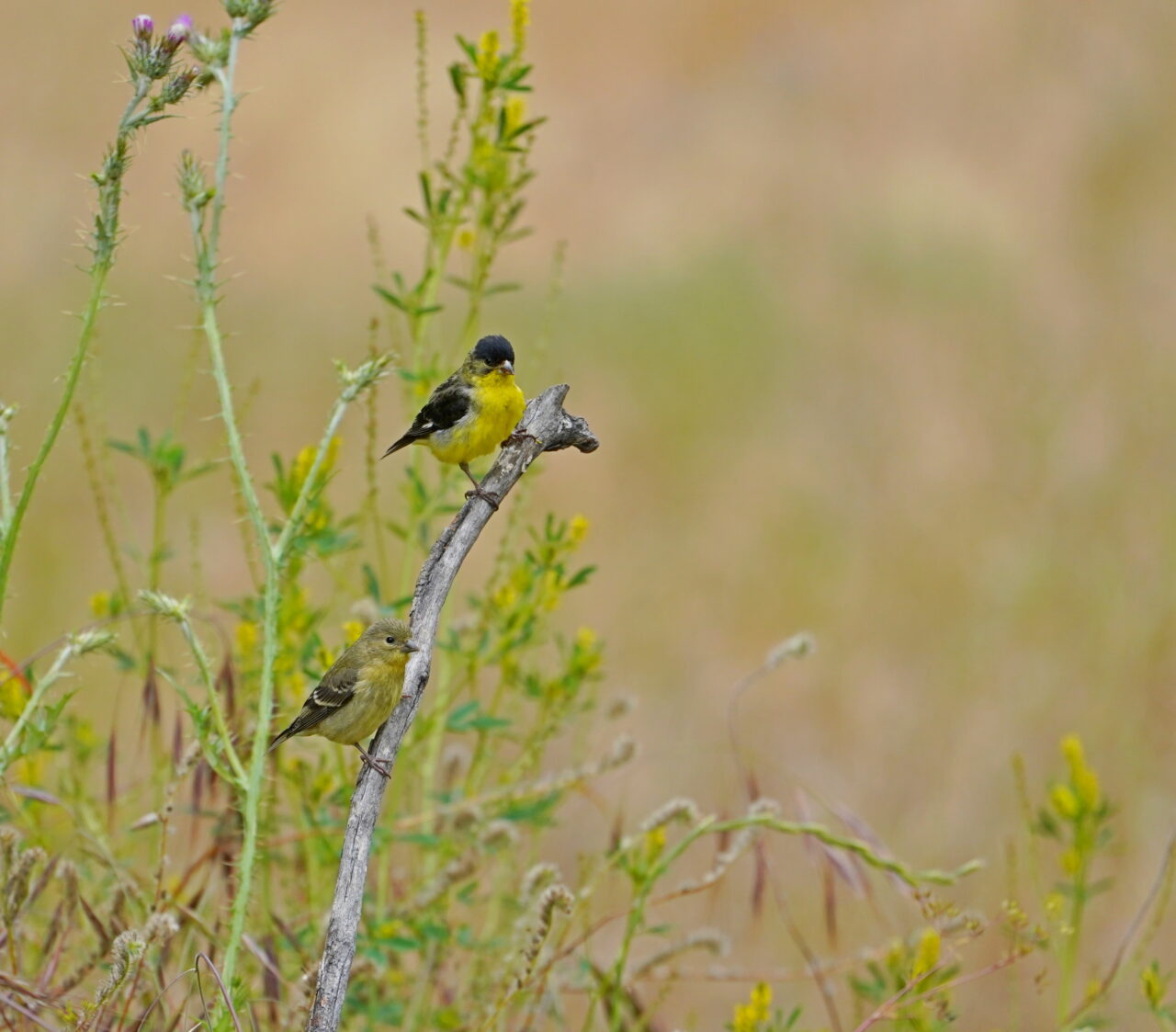
The Big Sur Land Trust (BSLT) is expanding their partnership with the Monterey Audubon Society (MAS) to collect eBird baseline data at two important BSLT properties in Salinas, California: Carr Lake and Marks Ranch. While Salinas is the largest city on California’s Central Coast, it has only 1.6 acres of park land for every 1,000 residents. Additionally, much of the wetlands within the area were drained to make way for farming land in the early 20th century. BSLT’s Carr Lake property will be home to a future project converting 73-acres of farm fields and infrastructure into 67 acres of open space restored to seasonal wetlands and wildlife habitat and a 6-acre park for residents. In addition, BSLT’s Marks Ranch property just outside the city has served as a site for youth camps, conservation grazing, and as a Healthy Soils Program test site. The eBird data collected at these important sites as part of the Carr Lake and Marks Ranch Bird Monitoring for Land Management Planning Project will help build knowledge of bird species, diversity, and abundance at each site. The data will also be used to identify the bird diversity and abundance that could exist at each site in the future, depending on restoration success and land management practices to increase bird conservation. Key findings will be added to property-specific reports that will be incorporated into management plans for each of the sites. Monterey Audubon Society will also provide eBird training to BSLT stewardship staff and key volunteers to help inform land management decisions with respect to specific species that may be present at Marks Ranch, Carr Lake, or elsewhere in the region. BSLT hopes Carr Lake and Marks Ranch will be models of habitat restoration and bird-friendly conservation practices for other land managers in the region, and the data collected at each site will be used to inform stewardship and management activities and support bird diversity and abundance in the face of climate change.
New River Land Trust (Virginia), $5,000
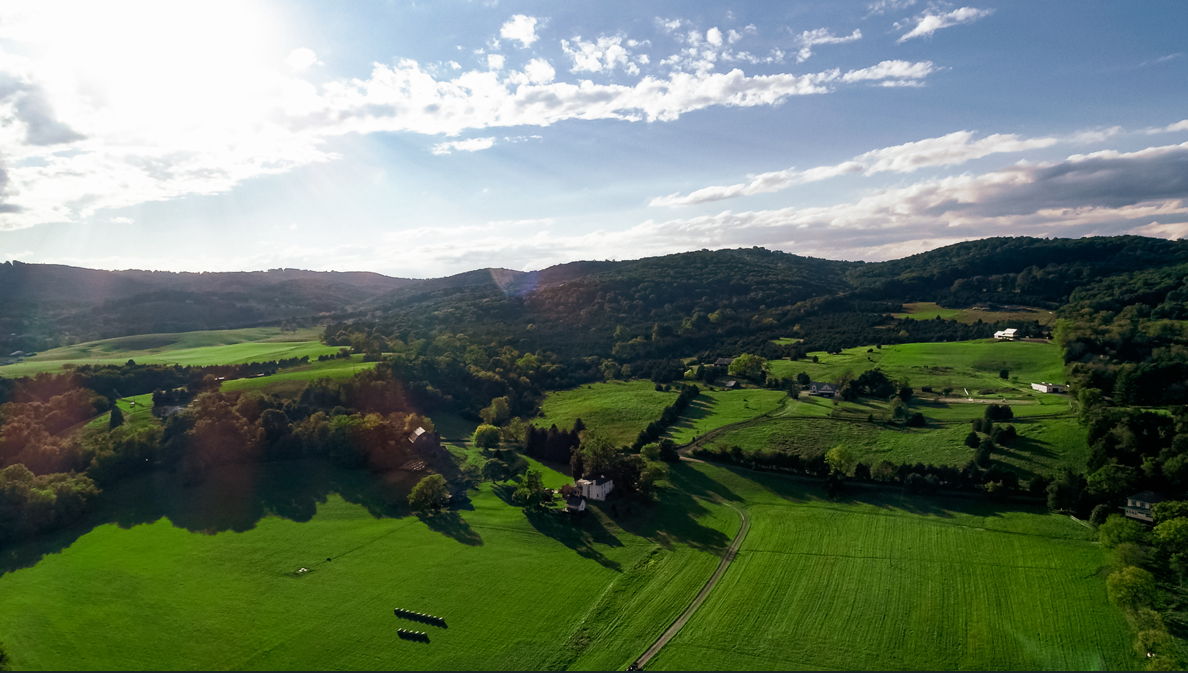
The New River Land Trust (NRLT) is creating a pilot program in the Catawba Valley in Southwest Virginia to engage local landowners and birders in grassland bird focused conservation on working farms. This Valley is a largely intact traditional farming community with multi-generational families. It includes 28 permanently protected conservation easements totaling 10,502 acres as well as 11,464 acres of high integrity ecological cores and corridors. Areas of developed land are currently scattered throughout, but growth pressure from the nearby New River and Roanoke Valleys increasingly threatens the rural character and ecological integrity of this area. In partnership with the Appalachian Mountains Joint Venture, NRLT will coordinate grassland bird surveys on two large farm properties with grazing cattle and recent stream restoration projects, to capture and understand bird species occurrence. In addition, NRLT will integrate bird specific data sets into their GIS-based conservation prioritization methodology. Integrating bird specific data, such as from the Northeast Bird Habitat Conservation Initiative Mapping Tool, survey findings, and GIS, will help NRLT and its partners to assess the properties’ potential for bird conservation value and future habitat restoration and improvement. NRLT will also conduct landowner interviews in the Valley and research pre-existing conservation programs, such as NRCS’s Beef and Bobs program. Then, NRLT will develop outreach material with community and academic partners to approach future landowners about incorporating bird conservation into their property management. The long-term goals of this project are to enable landowners to both increase and improve habitat for grassland birds and to engage in community science on private lands.
Trust for Public Land (Ohio), $5,000
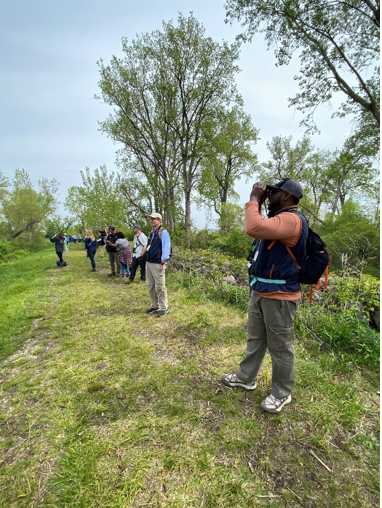
The Trust for Public Land (TPL) will access local important bird areas and legacy TPL conservation sites to convene spaces where novice and experienced birders from diverse backgrounds can intersect with one another to spur exchange in a growing Ohio birding community. In the U.S., birding can be characterized as a growing recreational activity that currently struggles to achieve 100% inclusivity, and according to research by U.S. Fish & Wildlife Service, the birding community is comprised of predominantly white participants. Stark underrepresentation, especially from BIPOC communities, poses an acute equity dilemma and limits the potential to bring the many health and wellness benefits associated with birding to those communities. The People and Birds for Land Protection (PNB4LP) project, funded in part by the Cornell Lab’s Land Trust Small Grant Program, is a new component of TPL’s Ohio program seeking to increase inclusivity in Ohio’s birding community and local working knowledge around bird behaviors and habitats in Northeast Ohio and coastal Lake Erie. This project will collaborate with TPL’s Journey on Yonder program to recruit novice BIPOC birders and introduce tangential health benefits such as mindfulness and health & wellness associated with birding, as well as conduct outreach to targeted outdoor organizations whose mission align with increasing BIPOC representation in parks and outdoor spaces. TPL will engage local bird clubs and Audubon groups to introduce and promote seasonal birding activities, highlight ongoing management plans and discuss financial assistance programs, host guided birding walks at the Cleveland Nature Preserve, Whiskey Island, Forest Hills Park and TPL legacy land, and distribute educational materials that provide background information on birds observed during these activities. Along the way, TPL will introduce ecosystem research from key agency practitioners to elevate local conservation priorities and use the results from this exchange to inform TPL’s future thinking around conservation opportunities within targeted geographies – bringing together community and science in a manner that will result in new conservation opportunities that deliver multiple co-benefits.
Sebasticook Regional Land Trust (Maine), $5,000
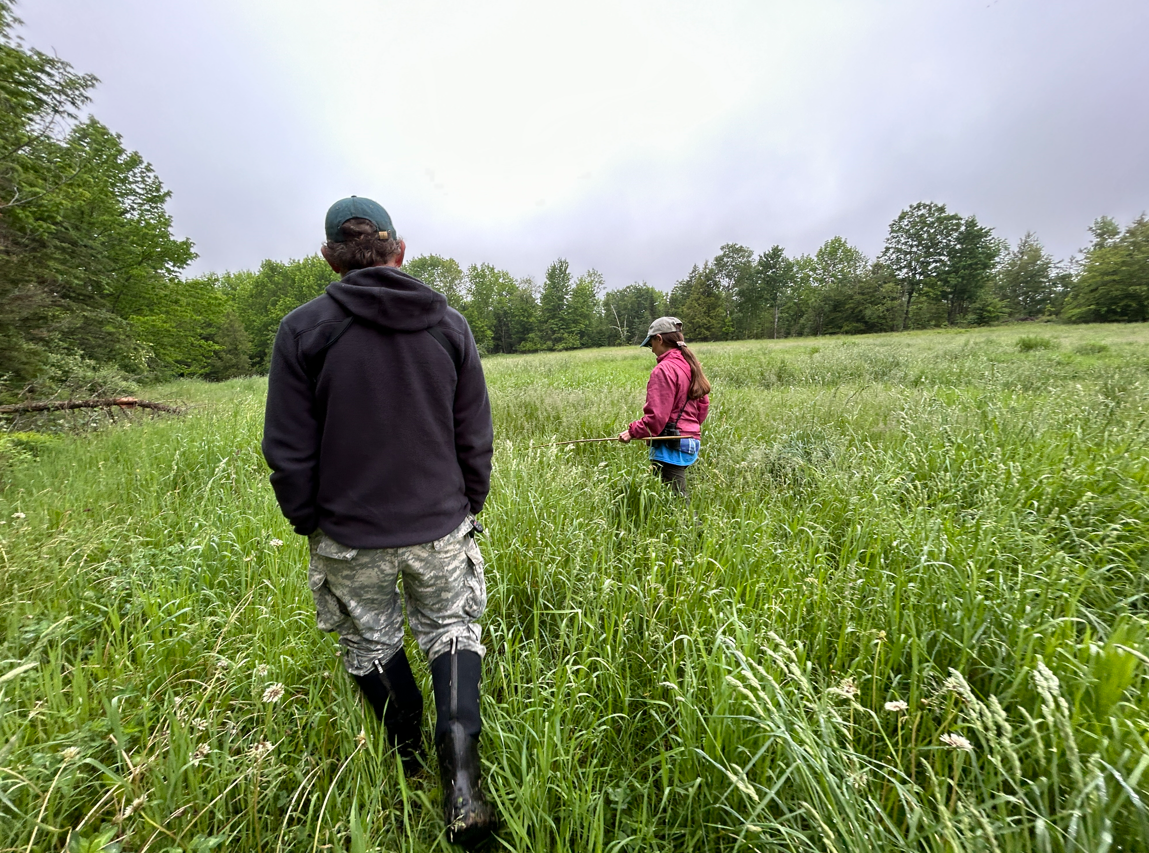
The Sebasticook Regional Land Trust (SRLT) will continue their partnership with Ag Allies to promote healthy grasslands to benefit grassland birds in and beyond their watershed. The Cornell Lab’s Land Trust Small Grant Program will provide funds to further improve Bobolink reproductive success at their demonstration site, a preserve in Unity, Maine with recently discovered PFAS contamination. These funds will bolster SRLT’s capability to provide information to supporters and area residents on the issues surrounding both grassland conservation and PFAS contamination on agricultural lands. SRLT, in collaboration with Ag Allies, will produce improved graphics for their website, kiosk, and brochure updates as well as present outreach events dedicated to grassland conservation and the use of eBird for monitoring. Tom Aversa, SRLT board chair, says “This grant provides a way for SRLT and partners to utilize our formerly leased, contaminated preserve to increase Bobolink numbers and provide a potential research site to examine effects and possible mitigation of PFAS contamination. The impacts of PFAS on wildlife are not well understood, but interest in studies aimed at both human and wildlife health have been increasing along with awareness of this environmental issue. The Cornell Lab’s funding opens the door to increase the land trust’s visibility, build our membership base, and reach a wider audience for our conservation messaging.” The collaboration between SRLT and Ag Allies has previously focused on managing grassland holdings to promote increased reproductive success of Bobolink and Savannah Sparrow populations, as grassland birds are among the fastest declining bird groups in the Northeast, with most experiencing major losses across New England in recent years in part because of early mowing practices. By modifying their field mowing dates, SRLT has increased breeding success and set an example for nearby conservation-minded farmers to delay mowing as well.
The Wetland Trust (New York), $5,000
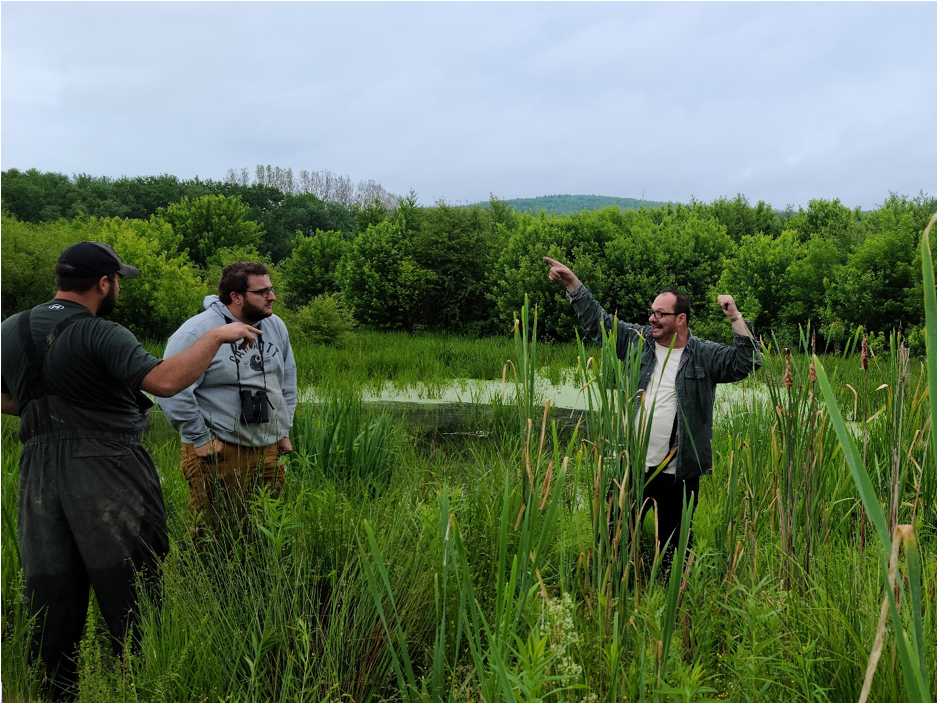
The Wetland Trust (TWT) will partner with Young Environmental Collaboratives (YEC), supported by crucial funding from the Cornell Lab’s Land Trust Small Grant Program, to develop and implement a marsh bird identification and survey protocol for field staff to be used annually. Wetlands are among the most threatened and rapidly declining habitats and are home to many unique bird species. TWT currently owns over 3,000 acres of wetlands across New York State, many of which are comprised of large wetland complexes along with precious bog and fen ecosystems. They support federally endangered turtles and protect rare, highly sensitive orchids; yet the potential for bird conservation remains largely untapped. Through multiple training sessions, YEC will introduce why and how to use conservation mobile apps like eBird and Merlin in regular stewardship and monitoring. Marsh bird methodology will be emphasized, as well as transect and point-count bird survey methodology. With guidance from YEC, land trust staff will conduct bird surveys in the summer and fall of 2023 and again in the spring and summer of 2024, logging all collected data into eBird as well as the TWT avian database. “We are so thrilled to add marsh bird, breeding bird, and waterfowl surveys to our monitoring suite,” says Sophia Finn, Conservation Coordinator. “This project will expand our conservation toolset and has the potential to connect over 3,000 acres of privately held wetlands to avian conservation data via eBird. Going forward we will be able to use avian surveys to inform our conservation strategies.”



